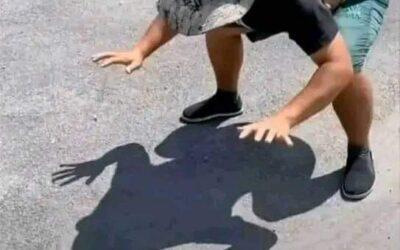We sit down with Bo Merckle of SamsSon Lures to discuss his unique idea for the ultimate memorializing bass fishing lure of your loved one.
Spring Spinner Bait for Bass a Fishing Guide


Using a Spinner Bait Post Spawn
Spinner bait fishing in general is such a huge category. You have tons and tons of different spinner baits, different style blades, different size heads, different colored blades, from blaze orange, to chartreuse, painted, chrome, nickel, different style blades like Colorado blades, Indiana blades, willow leaf blades. What are they all for and when do you use each?
Let’s explore them.
The purpose of a spinner bait is to mimic a little school of bait fish. If you have some flash, have some vibration and mimic a school of bait fish, hopefully they will eat that bigger bait, and you catch yourself a fish.
Look at the Alabama rig. It’s got 4,5,6,8 blades on it. You got five wires. Sometimes you have six wires. You got dummy baits. You have a bigger ball of fish. But. you can’t throw them in super shallow water.
The best thing about a spinner bait is the metal on the spinner bait is the best weed guard on the market. These things are super weedless. So this time of the year, that water is coming up. Your water temps are coming up. Those fish are going super shallow. They’re looking to spawn. They’re going to be on little isolated pieces of cover in shallow, shallow water. And that is when the spinner bait really shines. Super shallow water.

If you’re fishing lay downs, stumps, maybe some isolated rock piles in that shallow water, you can throw a spinner bait up there in inches of water, swim it back, add a little bit of rod twitch to get that blade moving, a little directional change, to get that skirt pulsating and they will eat it. So that’s why we’re writing about them right now. This time of the year, as the bass start pushing farther and farther up shallow, the spinner bait is a must throw to catch them.
The chatterbait, the square bill, the lipless crank bait, are great choices for target casting, into isolated pieces of cover. These baits work great prespawn, however once the spawn kicks off, that’s when you should switch to finesse.
A week or so, after the spawn, in the post spawn, that is when the spinner bait can be a great choice, when you start seeing the shad spawn, those fish early morning, low light, hours are up in inches of water, and the best bait to target those guys is a spinner bait. We guarantee you will catch more fish this year if you give the spinner bait a chance.
Spinner baits. It’s a huge, huge category, and there are probably hundreds of different baits on the market. You got baits with Willow blades, Colorado blades, Indiana blades, bright orange painted blades, chartreuse blades, and so forth. The combinations of spinner baits is astronomical.
You could go all white painted. You could go one solid Colorado. Maybe you’re night fishing a black blade, heavy head.
So today we’re going to try and simplify it. Then you can apply the different categories to your fishery depending on your water clarity and spawn timing.
The biggest thing with spinner bait fishing is choosing the right spinner bait and pairing it up with the right trailer. You have spinner baits that come with long skirts, shorter skirts, big blades you have to run with a trailer hook. We’re going to talk about all that. But first let’s separate the spinner baits into three categories.

Muddy Water
Bright colored spinner baits. Let’s talk muddy water, this time of the year, you get those spring storms and you get the creek inflow, which in turn you get the muddy water coming in. But those are the days when we find ourselves in those conditions that you should go bright, either some kind of bright red or orange. It’s chartreuse and white with a little bit of day glow flash in there. Maybe go with straight chartreuse, but those are the days to tie on the chartreuse and whites.
We’re going with a full white spinner bait with some orange, nice white trailer, something I with a big profile in the water.

Stained Water
Painted blades, a little bit more subdued than the bright blades and a smaller blade type.
Visibility is 2-3’. That’s when you go with a spinner bait that has painted blades. Either straight up white, or some painted chartreuse blades, a little bit of flash, little bit of vibration.
Again, run a trailer on it. Keep them really simple. Either the spunk shad. You don’t really need the kick. You just want something to keep that bait a little bit of resistance to keep that bait horizontal as much as possible in the water. And you want something that sticks out the bait just a little bit past the blade.
A step down a little bit from bright, if the water is starting to clear up a little bit, we go with gold.
Gold works really well in that kind of transition period. Again, put some kind of flash on there and run a trailer, but keep it really simple.

Clear Water
Now is the time to go finesse. When you find yourself in more of that clear water with high visibility. That’s also when to downsize.
Go completely natural. Perhaps throwing the Tot by Damiki., a Little Z-Man or SV 3 by Megabass. That’s one of our favorites. That’s a bait that you don’t have to run a trailer on because it has little longer appendages. So the actual profile of the bait is still bigger than the blades.
The SV 3 is an awesome clear water spinner bait. Another great choice is the War Eagle.
So we have covered muddy water, stained, dingy water and clear water ultra finesse. Again, you’re trying to mimic a ball of bait, right. But for the most part with a spinner bait, you are trying to mimic a little ball of bait fish.
Next let’s look at the actual blade size this time of the year. Say you’re coming into the back of a cove. Look for lay downs, flooded stumps, isolated rocks, isolated pieces of cover. Start with making short target casts to those isolated pieces of cover. You literally can see them on the shoreline. You can see them out ahead of you in the lake. Fish that spinner bait slow.
We would recommend using a 7:1 gear ratio reel. It’s really important to slow your spinner bait down this time of the year. Again, those fish aren’t going to chase very far. So a bigger willow blade is going to allow you to float that bait up and fish it slower. Also putting a swim bait on the back, that’s a 4.3” Keitech on the back of that terminator swim bait, you can fish the spinner bait super slow.
If you see a stump, make multiple casts to that stump. Add a little bit of rod twitch or reel twitch to get that blade to do a different cadence than it’s been doing to get that skirt to pulsate. Again, it’s just trying to get those fish to come out off of that cover, so allowing yourself to be able to fish slower with that bigger blade and that trailer is key.
The other key thing this time of the year is paying attention to your bait size. So now let’s say you’re in clear water, good visibility. You want something that’s mimicking the bait size. So look at the hatch. Say you are seeing little shad or little silver sides, maybe an inch, inch and a half flickering all over the surface. A lot of times, they’re in the very back, maybe a wind blown cove. That’s where you should downsize the blades. Heep in mind that you’re going to want your bait to be bigger than your blades.
The Tot or the SV 3, is a spinner bait that you should add a trailer hook to. If your not running some kind of swim bait or trailer bait on the spinner bait, then you should run a stinger hook to make sure that I get agood hook set. With the War Eagle it’s got a longer skirt. So in the water that’s hiding the hook, it’s still sticking down lower than the blade and those bass, nine times out of ten, once they see that bait, (remember they feel it first then they see it.) They’re going to go for that larger profile, the skirt, and that’s where they’re going to bite.
So pay attention to your blade size. If you want to slow down, go with a spinner bait with a larger blade. If you want to speed up, go with something with a little smaller blade.
The other thing you can do is play around with the angle that your arm is coming off of your spinner bait. If you squeeze the arm down a little bit, it’s going to speed up the spinner bait. If you bend it out a little bit, it’s going to slow it down. This time of the year, target your casts into isolated pieces of cover and slow it down. You’re making multiple casts, and it’s onto the next you’re still covering water, but you’re visibly seeing your next cast, the next lay down that’s coming up, you’re going to make multiple casts. Both sides of it, maybe on the front of it, alongside of it, both sides and with the spinner bait, you can throw right into that lay down and not have to worry about it getting hung up.
Let’s talk shad spawn, post spawn, as these fish finish up their spawn, they’re still in the shallows. Now you have the shad that are coming in. They’re going to do their spawn. Typically, it’s on hard surfaces, rock points, rock walls, shell beds, points etc. That’s going to have hard bottom. And a lot of times it’s really shallow. And you’ll see the bass, low light conditions just blowing up on them. That spinner bait is a must.
If you’re fishing clear water and you’re fishing around shad, that’s where you should put away the Colorado and Indiana style blades. Those have a lot slower, bigger thump. The Willow blades sound like shad more than the big, thumping, single blade Colorado or an Indiana that has a real wide thump. Whereas the willow, it’s a real tight kind of kind of spin and flash. It just mimics a school of bait fish a lot better. So that’s when to go with the double willows like the SV 3 by Megabass ot the Tot by Damiki.
Another great one is the Pulsator by Nickels. These have the Painted Blades, but they also come with just straight nickel or chrome blades. They come with non painted blades. We like the painted blades. If we’re trying to mimic blue gill or are fishing in that stained water. But that Pulsator is another great spinner bait.
Let’s talk about light conditions. If there’s not a cloud in the sky, fairly clear water. That’s when you go flashy. Chrome blades, blades with painted glitter. Something that’s going to put a ton of flash off. Lots of light refraction in the water. If that blade is going to be flashing and shining all over the place, those fish are going to come in from a long distance.
On the flip side, if you have overcast skies, you’re not going to want to have something that’s super bold, super flashy in their face. You want something a little bit more toned down. You can still go with just the chrome, silver blades or nickel blades, but you can go with some painted blades if you’d like. You don’t have to go with that straight, super bright blade. If you have a little bit of overcast, a little bit of cloud cover, tone down your blades a little bit.
If you do find yourself in that kind of stained water, muddy transitioning, to stained, go with a spinner bait that has a gold blade.
hopefully that at least shed a little bit of light on why there are so many different spinner baits on the market, why there are so many different styles of blade combinations and why maybe you’ve tried throwing a spinner bait and why you’re not having success but your buddies are. Maybe it’s the style of spinner bait you are throwing. Maybe it’s not swimming correctly underwater, and maybe you’re not pairing it up with the right trailer. Again, with trailers keep it simple.















0 Comments